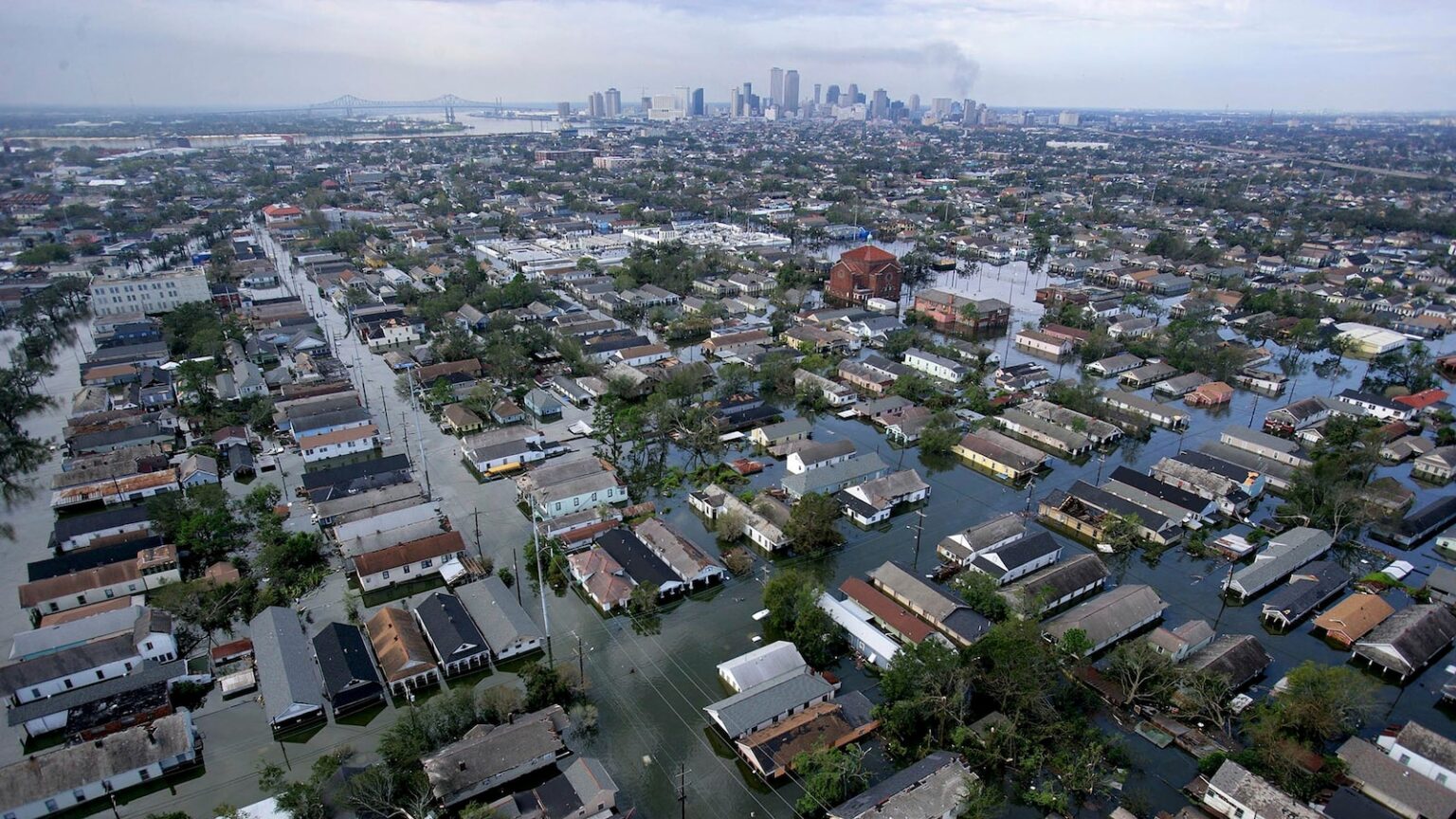Twenty years ago, on Aug. 29, 2005, Hurricane Katrina cemented itself in history as one of the deadliest and most devastating disasters to strike the United States.
Katrina claimed the lives of 1,392 people, according to the National Hurricane Center, with most of the lives lost in Louisiana and Mississippi. This made Katrina the deadliest hurricane for the U.S. since the 1928 Okeechobee Hurricane.
Hurricane Katrina.
ABC News, Files
The storm caused more than $125 billion in damage across the Southeast U.S., making it the costliest hurricane in the nation’s history before it was tied by Hurricane Harvey in 2017. Most of the damage was due to the levee and water pump failures in New Orleans, the historic storm surge in Mississippi and Katrina’s expansive wind field.
Katrina’s beginnings
What would eventually become Hurricane Katrina began as a tropical wave that merged with the remnants of a tropical depression near the Lesser Antilles on Aug. 19.
The combined disturbance became more organized as it moved northwest of the Bahamas over the following few days, becoming a tropical depression on Aug. 23.
At 11 a.m. ET the next morning, a Hurricane Hunters flight into the storm found that it had reached tropical storm strength with max sustained winds of 40 mph. At that point, it received the name Katrina.
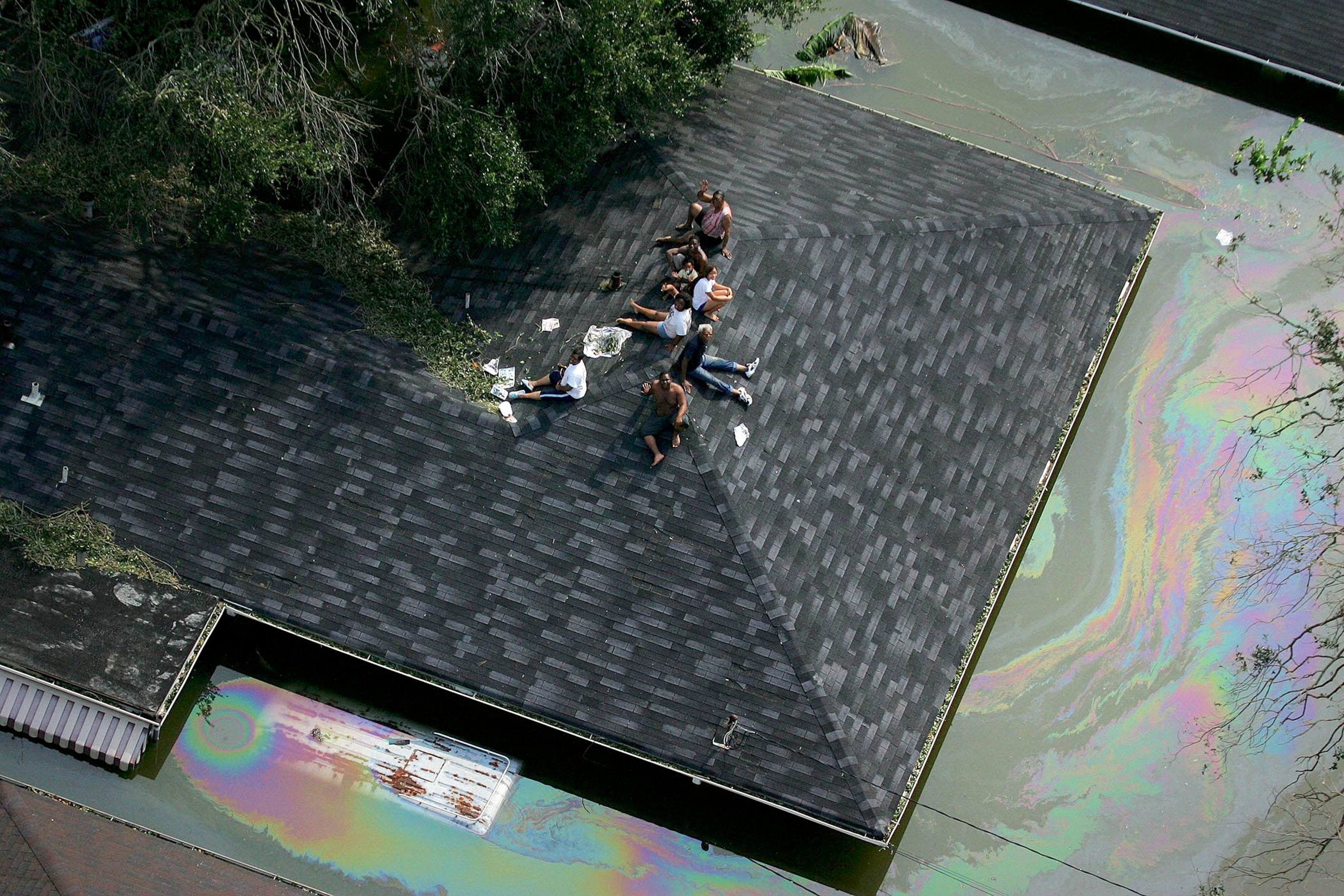
People are stranded on a roof due to flood waters from Hurricane Katrina, August 30, 2005 in New Orleans, Louisiana.
Vincent Laforet/Pool/AFP via Getty Images, Files
Tropical Storm Katrina then began to turn west toward South Florida and quickly strengthened into a hurricane less than two hours before landfall on the evening of Aug. 25 near Hollywood, Florida, with max sustained winds of 80 mph.
Katrina tracked over the Florida Everglades and weakened to a tropical storm before reemerging over the Gulf on Aug. 26.
Katrina underwent rapid intensification twice
As Katrina began to track in the Gulf, it restrengthened into a Category 1 hurricane with max winds of 75 mph. A perfect storm of conditions helped Katrina not only rapidly intensify in strength, but do so twice within a 48-hour span.
Rapid intensification is a process where a tropical cyclone quickly ramps up in strength, increasing in its max winds by at least 35 mph within 24 hours.
With abnormally warm sea temperatures reaching down deep in the Gulf and low wind shear, Katrina rapidly intensified with max winds increasing from 75 mph on Aug. 26 to near 110 mph by the next morning.
Katrina then underwent rapid intensification again beginning Aug. 27 after slightly weakening from an eyewall replacement cycle, a natural fluctuation that allows a tropical cyclone to better take advantage of its environment.
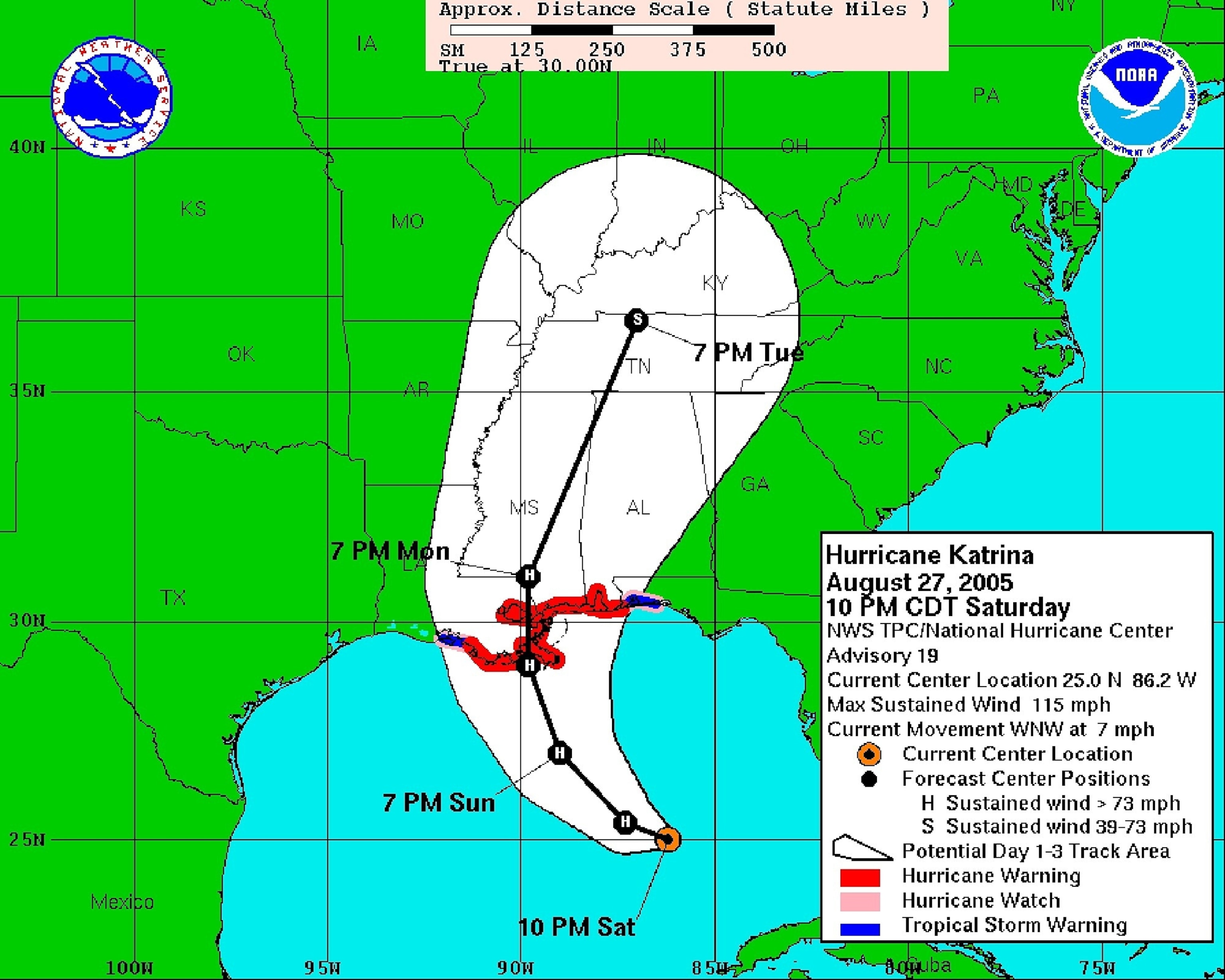
Hurricane Katrina.
Noaa, Files
After completing the eyewall replacement cycle, Katrina went from a Category 3 hurricane with winds at 115 mph to a powerful Category 5 hurricane with max winds near 165 mph on Aug. 28 as it began to turn north toward Louisiana.
Katrina reached its peak strength about 300 miles south of New Orleans with maximum sustained winds of 175 mph. At that time, it became the strongest hurricane ever recorded in the Gulf. Katrina would be surpassed by Hurricane Rita later that year and by Hurricane Milton in 2024.
Dire forecasts and warnings of Katrina’s wrath
Leading up to Katrina’s fateful landfalls over the Gulf Coast, the National Hurricane Center and the local National Weather Service office for New Orleans issued chilling forecasts for the Louisiana and Mississippi Coasts.
The National Weather Service office for New Orleans and Baton Rouge issued an unusually dire warning on Aug. 28, urging residents to evacuate and avoid the devastation Katrina was expected to bring.
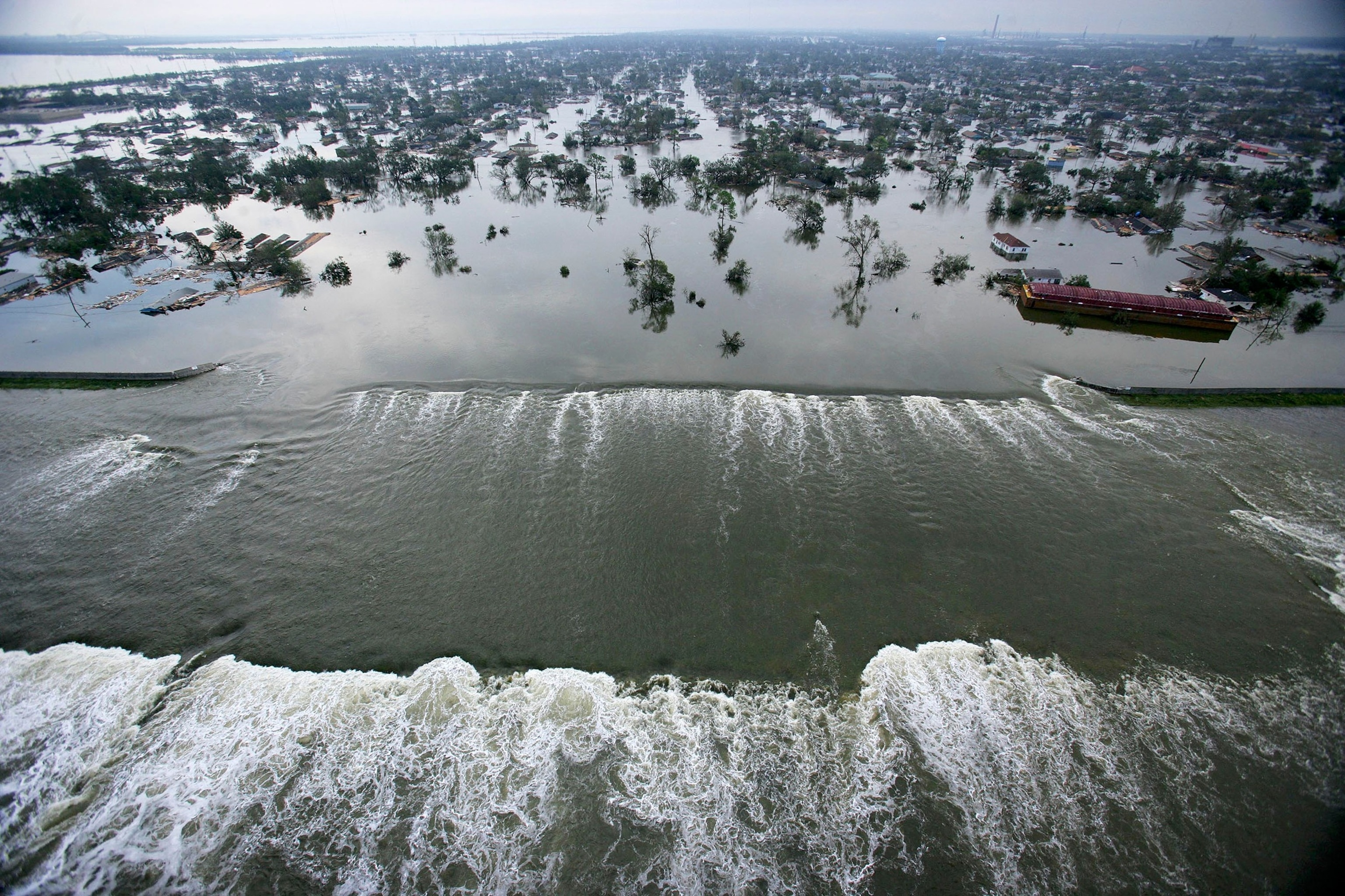
Water spills over a levee along the Inner Harbor Navigational Canal in the aftermath of Hurricane Katrina, August 30, 2005 in New Orleans, Louisiana.
Vincent Laforet/Pool/AFP via Getty Images, Files
The office warned that “most of the area [would be] uninhabitable for weeks…perhaps longer,” and that anyone exposed “will face certain death if struck.” This stark language is rarely used by the National Weather Service — it’s only reserved for the most extreme situations.
That same day, New Orleans Mayor Ray Nagin ordered the first-ever mandatory evacuation of the city, fearing that Katrina would be “an unprecedented event in the history of the city of New Orleans, and we want everybody to get out.”
Katrina’s turn north toward Louisiana
An area of high pressure was situated over the Gulf Coast, forcing Katrina to make its turn west into Florida before emerging into the Gulf. The area of high pressure began to shift east toward the Atlantic Ocean, allowing for Katrina to turn north toward Louisiana as the week progressed.
On Aug. 29 at 6:10 a.m. CT, Katrina made its second landfall over Plaquemines Parish, Louisiana — about 45 miles southeast of New Orleans — as a Category 3 hurricane with max winds of 125 mph. Although Katrina had weakened slightly, its hurricane-force winds extended almost 120 miles from the system’s center at the time of landfall.
Later that morning, Katrina made its third and final landfall at the mouth of the Pearl River near the Louisiana-Mississippi border with winds up to 120 mph after crossing the Breton Sound.
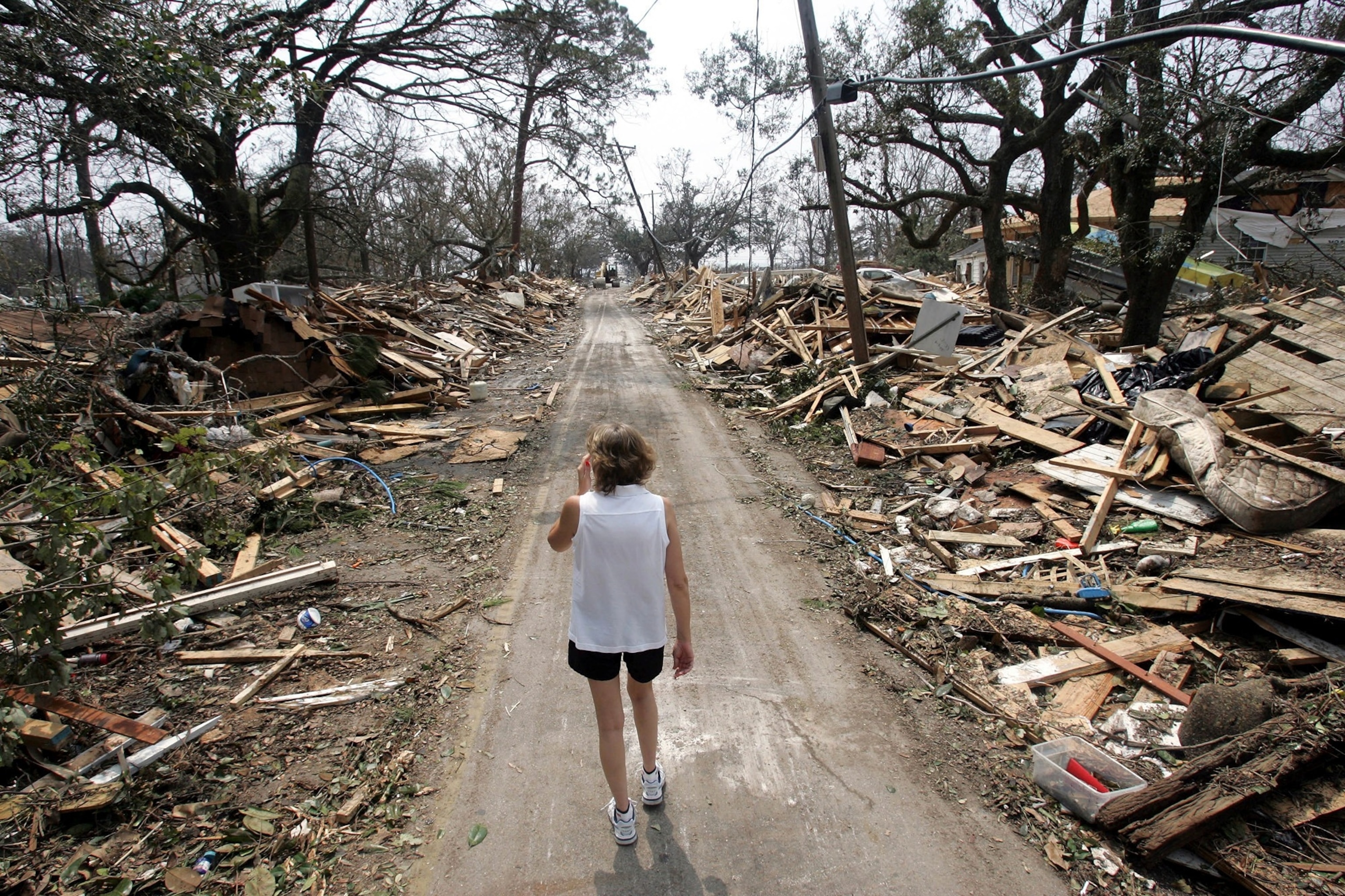
Rhonda Braden walks through the destruction in her childhood neighborhood in Long Beach, Miss., Aug. 31, 2005, after Hurricane Katrina ravaged the area.
Rob Carr/AP, Files
As it moved over Louisiana and Mississippi and went further inland away from its fuel source, Katrina began to quickly weaken. Katrina weakened to a Category 1 hurricane by 2 p.m. ET on Aug. 29, then to a tropical storm only six hours later.
By the morning of Aug. 30, Katrina had weakened to a tropical depression near Clarksville, Tennessee, with max winds near 35 mph. The next day, Katrina dissolved into a remnant low — a shell of its former self — as it moved over the Ohio Valley.
The World Meteorological Organization, the organization responsible for maintaining the list of names used for tropical cyclones, retired the name “Katrina” from the Atlantic hurricane naming list in April 2006.
The post How Hurricane Katrina unfolded, from a weather perspective appeared first on abcnews.go.com

